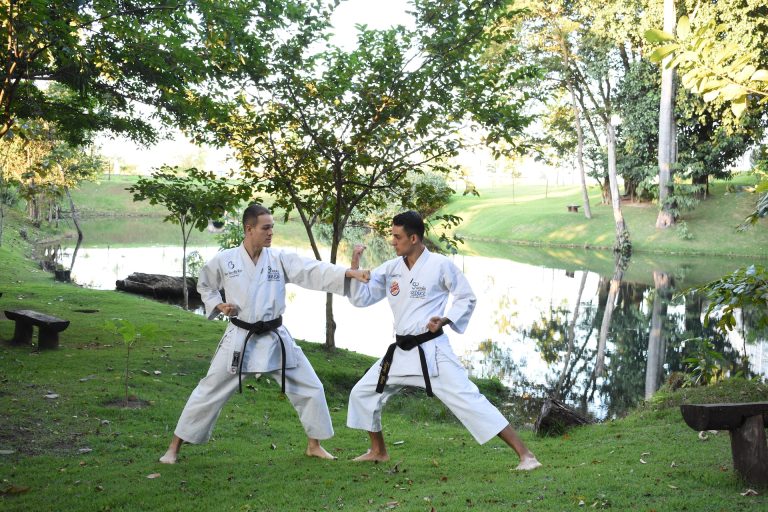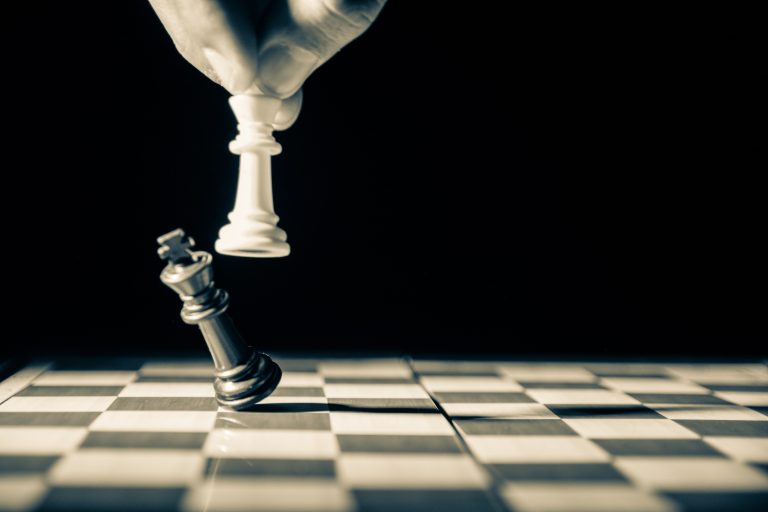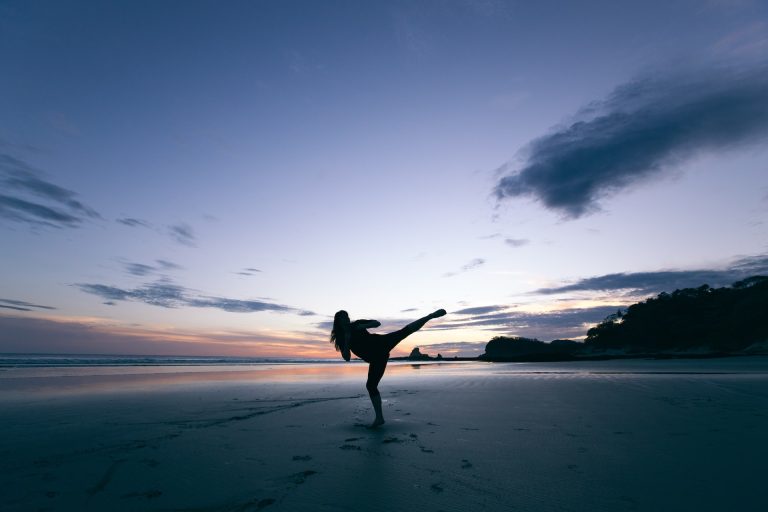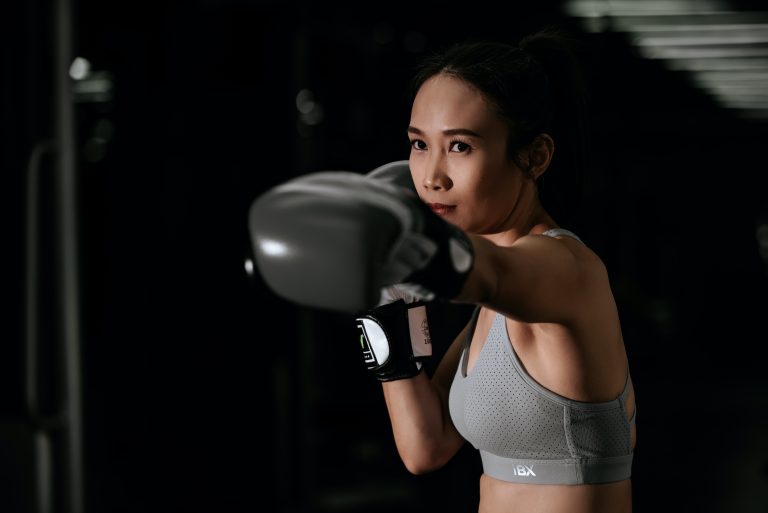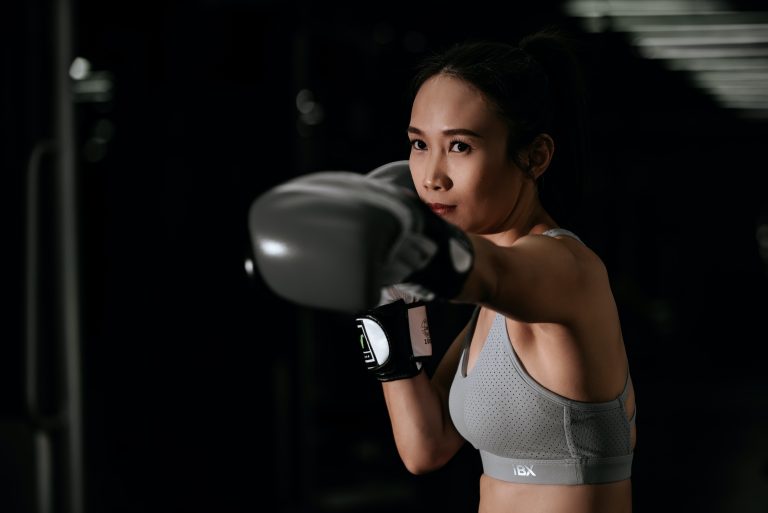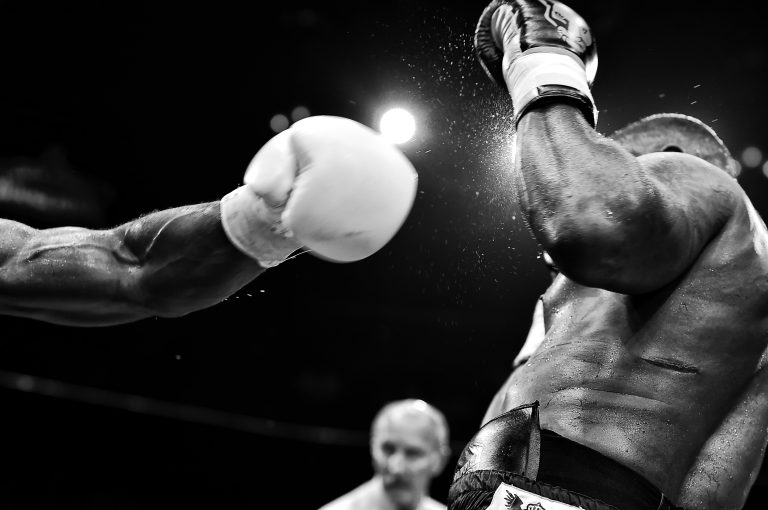Different Styles in Karate: Exploring the Unique Characteristics and Techniques
Karate is a martial art that originated in Okinawa, Japan, and is practiced by millions of people around the world today. Over time, the practice of Karate has evolved and different styles have emerged, each with its unique characteristics and techniques.
In this blog post, we will explore the different styles of karate and what sets each of them apart from the others.
Shotokan Karate
The Shotokan style of karate was founded by Gichin Funakoshi in the early 20th century. This style is characterized by its fast and powerful movements, as well as its emphasis on strong stances and strikes.
One of the key features of Shotokan karate is the use of the hip and core muscles to generate power in strikes, such as the front kick and roundhouse kick. This style also places a strong emphasis on kata, or prearranged forms of movement that practitioners memorize and perform.
Goju-Ryu Karate
Goju-Ryu karate was founded by Chojun Miyagi in the early 20th century. This style is known for its focus on close-range combat, incorporating both hard and soft techniques.
In Goju-Ryu karate, practitioners use a combination of circular movements and quick strikes to take down opponents. The style also teaches grappling techniques and pressure point strikes, making it a well-rounded system for self-defense.
Shito-Ryu Karate
Shito-Ryu karate was founded by Kenwa Mabuni in the early 20th century. This style combines the hard and soft techniques of Goju-Ryu with the fluid, graceful movements of Shotokan.
Shito-Ryu karate places a strong emphasis on kata, with many of its forms incorporating grappling techniques and throws. This style also emphasizes the use of pressure point strikes and joint locks.
Wado-Ryu Karate
The Wado-Ryu style of karate was founded by Hironori Otsuka in the mid-20th century. This style is characterized by its fluid movements, with practitioners using evasive techniques to avoid attacks and counter with their own strikes.
Wado-Ryu karate places a strong emphasis on footwork, with practitioners using quick stepping movements to get in and out of range. This style also emphasizes the use of joint locks and throws, making it an effective system for both self-defense and competition.
Different Styles in Karate: Frequently Asked Questions
Karate is a popular martial arts form that originated in Okinawa, Japan, and has spread worldwide. With its popularity, there are now many different styles of karate, each with its unique characteristics. The different styles can be confusing for beginners, which is why we have compiled a list of frequently asked questions to help you understand each style better.
What are the different styles of karate?
There are many different styles of karate, but some of the most popular include:
- Shotokan
- Goju-ryu
- Shito-ryu
- Wado-ryu
- Kyokushin
What is Shotokan style karate?
Shotokan is a traditional form of karate that was developed by Gichin Funakoshi in the early 20th century. It is characterized by its strong stances, linear movements, and powerful strikes. Shotokan is one of the most popular styles of karate worldwide.
What is Goju-ryu style karate?
Goju-ryu is a traditional form of karate that was developed by Chojun Miyagi in the early 20th century. It is characterized by its combination of hard and soft techniques and its emphasis on circular movements. Goju-ryu is popular for its self-defense techniques.
What is Shito-ryu style karate?
Shito-ryu is a traditional form of karate that was developed by Kenwa Mabuni in the early 20th century. It is characterized by its combination of Shotokan and Goju-ryu techniques, allowing for a more well-rounded approach to combat.
What is Wado-ryu style karate?
Wado-ryu is a traditional form of karate that was developed by Hironori Ohtsuka in the mid-20th century. It is characterized by its combination of traditional karate with aikido techniques, including throws and joint locks.
What is Kyokushin style karate?
Kyokushin is a modern form of karate that was developed by Mas Oyama in the mid-20th century. It is characterized by its emphasis on full-contact sparring and its use of conditioning exercises, such as breaking boards and bricks.
Which style of karate is best for self-defense?
Any style of karate can be effective for self-defense if taught and practiced correctly. However, some styles, such as Goju-ryu, are specifically designed for self-defense and may be more practical in real-world situations.
Which style of karate is best for competition?
Different styles of karate have their tournament formats, and each style may have its strengths and weaknesses within those formats. However, Shotokan karate is often favored for competition due to its focus on explosive techniques and strong basics.
Can I learn multiple styles of karate?
It is possible to learn multiple styles of karate, but it can be challenging. Each style has its unique techniques and principles, which may conflict with other styles. Learning multiple styles can be confusing and may hinder your progress in each style.
Which style of karate is best for beginners?
All styles of karate are suitable for beginners, but some may be more challenging than others. Shotokan is a popular style for beginners due to its structured curriculum and emphasis on basics.
How long does it take to become proficient in karate?
The time it takes to become proficient in karate will vary depending on the individual’s commitment, natural ability, and the style of karate. Generally, it takes around three to five years of consistent practice to achieve a black belt and proficiency in basic techniques. However, mastery of karate is a lifelong pursuit.
Different Styles in Karate – A Comprehensive Guide
Karate is a traditional martial art that was developed in Okinawa, Japan. It has its roots in Chinese martial arts and is known for its powerful striking techniques, blocks, and throws. Karate has several styles, and each style has its unique characteristics. In this blog post, we will discuss the different styles of karate and their distinctive features.
Shotokan Karate
Shotokan is one of the most popular styles of karate, and it was developed by Gichin Funakoshi in the early 20th century. Shotokan emphasizes strong stances, powerful strikes, and quick movements. It also includes traditional katas or forms, which are prearranged sequences of movements that simulate a fight against multiple opponents.
If you want to learn Shotokan karate, you need to focus on developing your core strength, flexibility, and technique. To start, you may want to find a local dojo or training center that offers classes in Shotokan karate.
Goju-Ryu Karate
Goju-Ryu is another popular style of karate that originated in Okinawa. It was developed by Chojun Miyagi, and it emphasizes circular movements, breathing techniques, and close-range combat. Goju-Ryu includes a range of kata, including Sanchin, Tensho, and Seipai, which focus on different aspects of the style.
If you want to learn Goju-Ryu karate, you need to focus on developing your breathing and striking techniques, as well as your flexibility and joint mobility. You may want to find a local dojo or training center that offers classes in Goju-Ryu karate.
Shito-Ryu Karate
Shito-Ryu is a style of karate that was developed by Kenwa Mabuni in the early 20th century. It combines elements of both Shotokan and Goju-Ryu karate and emphasizes fluid movement, rapid techniques, and precise timing. Shito-Ryu includes katas such as Pinan, Naihanchi, and Bassai, which focus on various techniques and movements.
If you want to learn Shito-Ryu karate, you need to focus on developing your timing, technique, and fluidity of movement. You may want to find a local dojo or training center that offers classes in Shito-Ryu karate.
Wado-Ryu Karate
Wado-Ryu is a style of karate that was developed by Hironori Ohtsuka in the mid-20th century. It emphasizes fluid movements, evasion, and simultaneous defense and attack. Wado-Ryu includes katas and techniques that focus on body shifting, joint locks, and throws.
If you want to learn Wado-Ryu karate, you need to focus on developing your evasion and timing, as well as your throws and joint locks. You may want to find a local dojo or training center that offers classes in Wado-Ryu karate.
Kyokushin Karate
Kyokushin Karate is a style of karate that was developed by Masutatsu Oyama in the mid-20th century. It emphasizes full-contact sparring and high-impact techniques, including kicks, punches, and strikes. Kyokushin Karate includes katas such as Taikyoku Sono Ichi and Sono Ni, which focus on basic techniques and movements.
If you want to learn Kyokushin Karate, you need to focus on developing your strength, conditioning, and stamina, as well as your striking and kicking techniques. You may want to find a local dojo or training center that offers classes in Kyokushin Karate.
Conclusion
Karate is a traditional martial art that has several styles, and each style has its unique characteristics. Whether you want to develop your strong stances and powerful strikes in Shotokan, practice circular movements and breathing techniques in Goju-Ryu, or focus on fluidity of movement in Shito-Ryu or Wado-Ryu, or full-contact sparring in Kyokushin, there is a karate style that suits your martial arts goals. Remember that it takes time, dedication, and practice to master any martial art style, including karate.
Inhaltsverzeichnis

